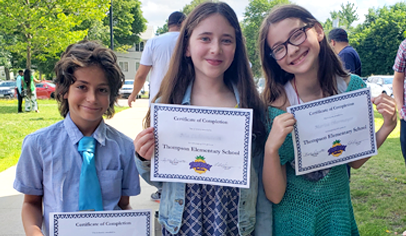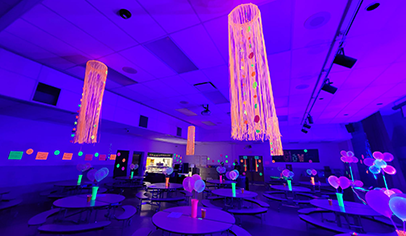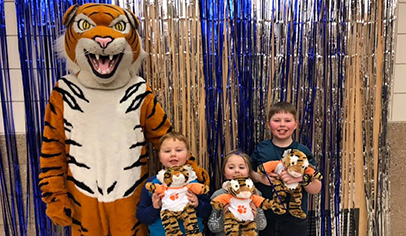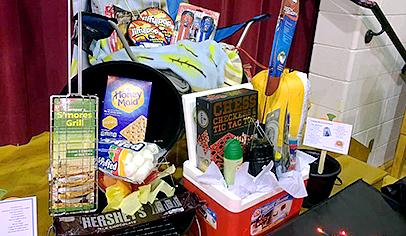Makerspaces have burst onto the education scene in a big way, with schools and PTOs across the country creating their own versions of this innovative new learning concept. We break down what it takes to build a makerspace and talk with parent group leaders who have had success.
What Is a Makerspace?
A makerspace is an area in a school where students have the opportunity to learn and create—especially in the STEAM disciplines—through building, painting, constructing, and other hands-on activities. Some schools dedicate a full room to a makerspace. At others, a makerspace is part of the library, or supplies are wheeled to regular classrooms on carts.
What's in a Makerspace?

Because a main goal of makerspaces is to encourage creativity, the supplies stocked in them can vary widely. It's common to stock them with arts and crafts supplies, building toys, and electronics like digital cameras and printers.
Keep in mind not just upfront expenses but also the cost of restocking supplies, such as printer ink. Collecting items that families normally recycle and looking for free tools online are some of the ways makerspace organizers can save money.
Benefits of Makerspaces
Makerspace projects typically emphasize exploration and hands-on learning. Whether it’s putting together structures with plastic bricks, painting, or building robotics, children get to discover concepts from science, art, and more by actually making and doing in ways that complement traditional classroom learning. Students might learn about electricity by forming simple circuits or gain a better understanding of architecture and engineering while building famous landmarks from recycled materials.
The versatility of makerspaces makes them a valuable investment. Because they’re intended to be a place to learn and create across many subjects, teachers in the arts, sciences, math, and other disciplines can use the space for activities for their students. After-school program leaders and PTO members can use the space outside school hours for their own events and activities, too.
Coelho Middle School PTO: Showing the Way

Tom Maguire/the sun chronicle
At Coelho Middle School in Attleboro, Mass., the makerspace was the brainchild of the art and STEAM teachers. The PTO helped make it a reality, providing $12,000 toward equipping the makerspace, which opened in spring 2018. The project was a team effort by the teachers, parents, and staff. Local employees from a technology company helped construct the room’s furniture and work spaces.
“The goal was to have a space where classroom teachers can bring students in and have kids learning by doing,” says PTO copresident Laura Fairweather. “Kids can benefit from being taught in different ways. They can release energy and explore, and it keeps it fun.”
Fairweather acknowledges that the newness of the makerspace concept made it challenging to explain the plan to parents. Even though makerspaces have since become more popular, Coelho says it’s still difficult to describe what the space actually is for—despite hours of research—because its uses are so broad. To help with this, the PTO held a makerspace open house and ribbon-cutting on one of its regular meeting nights.
“Everything just suddenly clicked,” she says of the well-attended event, which wowed families. She encourages other PTOs to hold similar events to introduce makerspaces to the wider school community.
Belinder Elementary PTA: Learning From Others

At Belinder Elementary in Prairie Village, Kan., principal Steve Yeoman came up with the idea to create a makerspace and reached out to the PTA for help. Three PTA members took the lead in conducting online research and taking field trips to makerspaces at nearby schools to get inspiration. Some of the schools with more established makerspaces provided helpful advice about what supplies were essential and what could be skipped.
“There are so many kids that don’t necessarily learn very well in the traditional sense,” says Belinder PTA member Amy Cotton. “Hands-on learning seemed like a way to reach them. Plus, it’s fun for everyone!”
Belinder’s makerspace, which launched in 2017, is stocked with creative supplies for students from kindergarten through 6th grade, including hand tools, workbenches, fabric scraps, cardboard tubes, sewing machines, and a miniature 3-D printer.
The room has since evolved into a dedicated STEM room, and Cotton says it’s a win-win. “Our STEM teacher uses all the supplies that were collected, and the room is in constant use,” she says.
The PTA kept costs down by using furnishings from elsewhere in the school, like extra bookcases and tables. The group then put its budget toward more expensive items, like the workbenches, 3-D printer, and giant trash cans. It also put out a call for donations of supplies.
“Our community came through big-time,” Cotton says of the donations of cardboard, pipe cleaners, batteries, and more. “Within a couple of weeks, we had more supplies than we had room.”
























